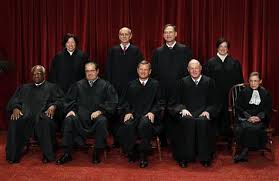To be heard by the U.S. Supreme Court this December 10, 2013 is the question whether children included as derivative beneficiaries on petitions filed by U.S. citizens are covered under the protection extended by the Child Status Protection Act, 8 U.S.C. §1153(h)(3). Cueller de Osorio’s mother, a U.S. citizen filed a petition for a visa (for a married daughter of a citizen) for her daughter in 1998 and on the petition, Cueller’s then 13 year-old son was listed as a derivative beneficiary. By the time his mother’s (the primary beneficiary of the visa petition) priority date for visa eligibility became current, the son “aged out” (losing “child” status) and the issue before the Court involves derivative visa eligibility and priority dates.
Will the court agree with the 9th Circuit that the derivative beneficiary’s priority date should be retained for purposes of being considered a “child” in light of the Child Status Protection Act?
The eligibility and priority date (and priority date retention) issues before the court involve the Child Status Protection Act (CSPA) and its rules for determining whether certain aliens qualify as “children” under the act for the purposes of obtaining visas or adjustments to their immigration status. The court may address and interpret the language of the law in determining what happens when a primary beneficiary (mom) by law, has a different priority date of eligibility than would the derivative beneficiary (son) whose immigration status could be affected based on the determination of the son’s visa eligibility.
The priority date is important to understanding the issues before the Court in this case. A limited amount of immigrant visas may be issued every year by law[i]. An immigrant visa number distributed by the U.S. Department of State is issued to visa applicants in limited numbers (226,000 per year for family sponsored preference categories and 140,000 per year for employment based preference categories) in order of the preference category and the individual’s priority date, used to determine their place in line, specifically stating the date upon which the individual can apply for an immigrant visa when one becomes available. There are also per country limits that have led to backlogs that are sometimes over 20 years long for certain countries such as the Philippines, Mexico, China, and India.
Did the derivative beneficiary son properly “age out” or should he be given “child” status?
In this case, in 2005, the United States Citizen and Immigration Services (USCIS) denied a request for priority date retention under the CSPA, holding that Cuellar de Osorio’s son, at age 21 was ineligible for a derivative visa, despite her son being 13 when he was listed on his mother’s visa petition in 1998 as a derivative beneficiary.
CSPA became law August 6, 2002, and prior to its inception, a beneficiary (an alien who is sponsored by a relative or business, or has self-petitioned for an immigration benefit[ii]) who turned 21 years old any time before receiving permanent residence would not be a “child” for immigration purposes, hence the term “aging out” which CSPA may prevent. Aging out is an issue since the processing times for immigration petitions can be excessive. For purposes of immigration, a “child[iii]” is unmarried and under the age of 21 (as opposed to a “son” or “daughter” married and/or age 21 and over).
Definitions of “child(ren)” and retention of priority dates in the INA.
The Immigration and Nationality Act, in Section 1153(h)(3)[iv] defines the qualifications for “children” for the purposes of obtaining visas or immigration status adjustments as derivative beneficiaries of sponsored family member immigrants. The law is clear that an alien may qualify as “child” derivative beneficiaries on the filing date a visa petition. What’s unclear is what should happen if the putative “child” is 21 years old by the time the visa becomes available to the primary beneficiary. The Supreme Court must decide whether the Board of Immigration Appeals properly interpreted the law.
Section 1153(h)(3), Retention of priority date, states in pertinent part as follows: “If the age of an alien is determined under paragraph (1) to be 21 years of age or older for purposes of subsections (a)(2)(A) and (d) of this section, the alien’s petition shall automatically be converted to the appropriate category and the alien shall retain the original priority date issued upon the receipt of the original petition.”
In immigration law, the intersection of laws in the U.S. Code and USCIS policies are complex. Many immigrants fail to obtain legal status when they do not understand the nuances of immigration law. At the Law Office of KiKi M. Mosley, clients seek petitions for visas seeking to include derivative beneficiaries. Attorney KiKi M. Mosley is licensed to practice law by the State of Illinois and Louisiana. She is skilled and experienced in complex immigration law issues. For more information about the law firm, please tap/click here to visit the rest of the website, and do not forget to “Like” the firm on Facebook and “Follow” on Twitter or Google Plus.
[ii] USCIS glossary: Beneficiary.
[iii] USCIS: Bringing Children, Sons and Daughters to Live in the United States as Permanent Residents.
[iv] 8 U.S.C. § 1153: U.S. Code – Section 1153: Allocation of immigrant visas.

